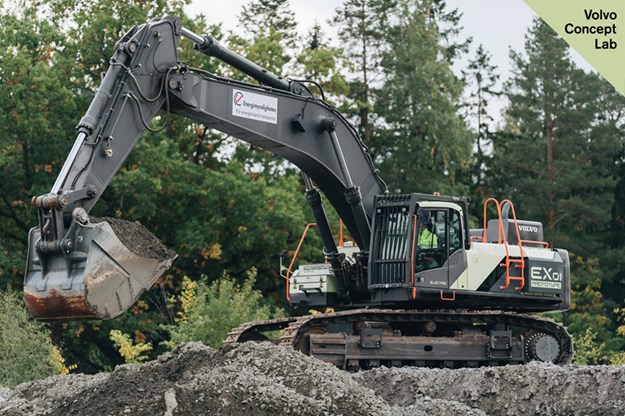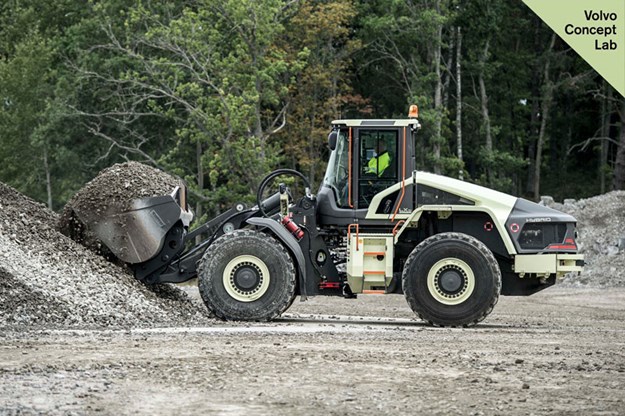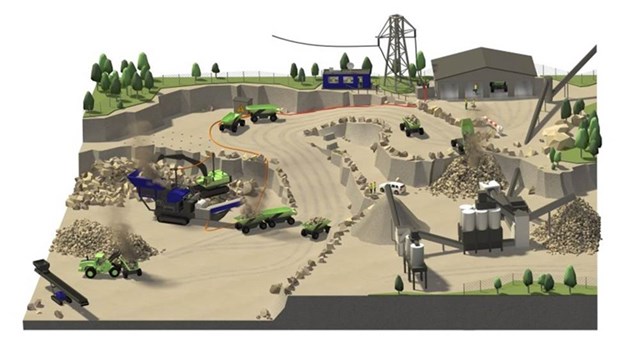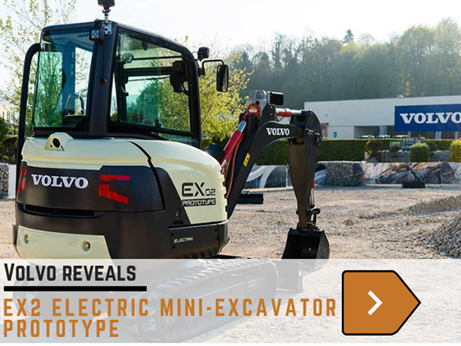Volvo Construction Equipment and European quarry operator Skanska began testing the viability of its electric site concept at Skanska’s Vikan Kross quarry, near Gothenburg in Sweden
 |
|
Volvo prototype EX1 dual-powered, cable-connected excavator
|
The system, which incorporates electric and autonomous Volvo machines, will run in a real production environment for 10 weeks – delivering an anticipated 95 per cent reduction in carbon emissions and 25 per cent reduction in total cost of operations.
Drawing on the electromobility and automation expertise of the Volvo Group, the research project, dubbed Electric Site, aims to electrify each transport stage in a quarry – from excavation to primary crushing, and transport to secondary crushing – although a negligible amount of diesel power will still be used. The system’s efficiency, safety and environmental benefits are set to impact both customers and society at large.
Volvo CE and Skanska began testing the Electric Site concept at Skanska’s Vikan Kross quarry, which produces aggregates for construction purposes as well as for asphalt and cement.
“This is the first time that anything like this has been attempted in the quarrying industry and, if successful, Electric Site could serve as a blueprint for transforming the efficiency, safety and environmental impact of quarries around the world,” Skanska Sweden CEO Gunnar Hagman says.
With Electric Site, Volvo CE and Skanska are challenging traditional ways of working in the quarrying industry. The project has involved developing new concept machines, work methods and site management systems which together form a complete site solution. New technology encompasses machine and fleet control systems and logistic solutions for electric machines in quarries.
“We have had to completely rethink the way we work and how we look upon machine efficiency – pushing the boundaries of our competence,” Volvo CE president Melker Jernberg says. “The total site solution we developed together with our customer Skanska is not a commercial solution for sale today and we will evaluate the outcome of the tests but we have learnt so much already, elements of which will be fed into our future product development.”
 |
|
Volvo prototype LX1 electric hybrid wheel loader
|
Gear used
Three rigid haulers, for example, have been replaced by eight smaller prototype HX2 autonomous, battery-electric load carriers to transport the material from the primary mobile crusher up to the secondary static crusher.
The protoype has advanced significantly since the HX1 was first shown to customers and members of the international press at the Volvo Exploration Forum in September 2016.
“The HX1 was our proof of concept,” explains Uwe Müller, chief project manager for Electric Site at Volvo CE. “Once we knew it was feasible, we updated the design requirements for the HX2 to incorporate shared technologies and components from the Volvo Group, such as electric motors, batteries and power electronics.
“Integrating a completely new drivetrain was crucial to take full advantage of the ground-breaking electromobility developments that are happening inside the Volvo Group. Another new feature is the addition of a vision system, which allows the machine to detect humans and obstacles in its vicinity.”
 |
|
Overview of the electric site
|
Electric upgrade
The primary crusher on the Skanska site is loaded by the 70-tonne dual-powered, cable-connected EX1 excavator prototype, which had not previously been seen by customers and press. The base machine for the EX1 is a Volvo EC750 model that has been upgraded to incorporate an electric motor in addition to the diesel engine.
“To fit the new components in the machine without increasing its size required a significant amount of repackaging work,” Müller explains. “However, in terms of the operator interface and controls, nothing has changed – it’s operated in exactly the same way as a conventional Volvo excavator. If the cable is connected, the machine will automatically start in electric mode. If it’s not, it will start in diesel mode.”
“Because the machine will be relatively static – only moving a few metres once or twice a day as the excavator works its way through the blasted rock – it’s ideally suited as a fully electric machine on a cable. This has allowed us to make it a zero-emission excavator when it’s plugged into the grid. However, we’ve designed it with flexibility in mind, so that we have the option of using the diesel engine when it’s needed, for example, to reposition the machine or quickly move it prior to blasting,” he continues.
RELATED


